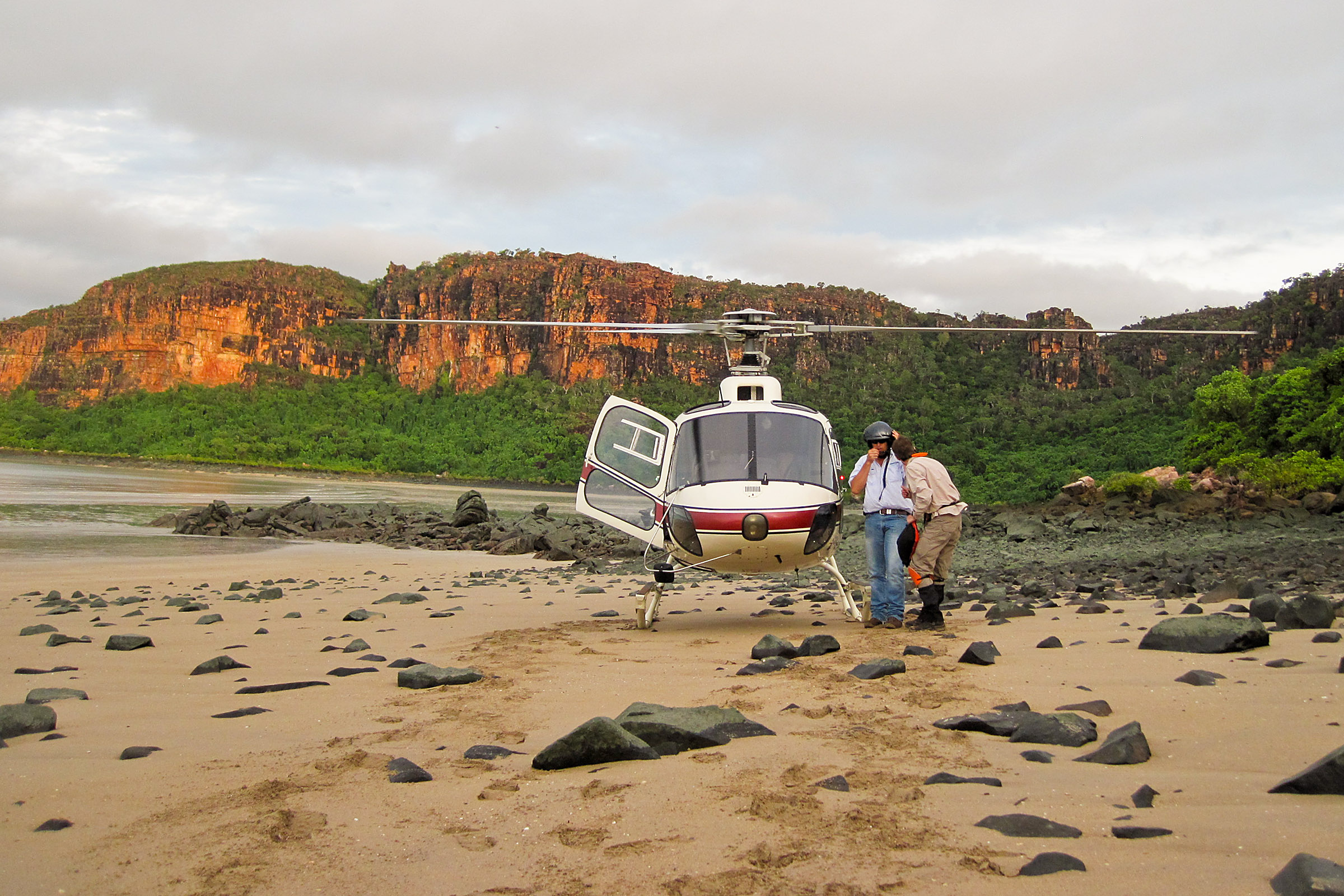By Owain Edwards and Raphael Didham.

We have just returned from a month collecting insects in the National Heritage-listed Kimberley region of Western Australia. Together with the Wunambal Gaambera and Dambimangari Aboriginal Corporations and University of Western Australia, our team of scientists collected something in the order of 300,000 insect specimens. Using helicopters to reach remote areas we visited 36 sites throughout a 21,000 square kilometre region. The goal: to find out how many insects there are in the Kimberley, and identify them.
Trawling through 300,000 specimens by hand may seem like a massive task, but it is dwarfed by that facing insect taxonomists around the world. Taxonomists have successfully identified around 2 million species on Earth. There are estimated to be around 8.7 million species in total. Most of those are insects.
Fortunately there are new methods that are allowing scientists to quickly identify large numbers of species over large geographic areas, and prioritise those most important for conservation.
Old school taxonomy
The established way to catalogue an undescribed species is through the science of taxonomy. In the case of insects, this would involve an entomologist collecting and closely studying an inspect specimen in order to accurately determine where it belongs.
Taxonomy is an indexing system. Without it there would be no way of attributing a particular ecological process to a particular organism. There would be no way to compare the results of ecological studies or build knowledge about how ecosystems function. Ecologists benefit greatly from taxonomic identification of species and the life history and distribution information that is linked to it.

The problem is that describing the remaining millions of unknown insect species using traditional taxonomy would take many, many lifetimes. Modern sampling techniques can yield numbers of insect specimens that vastly exceed our capacity to identify them. And at a time when the number of taxonomists is sadly in decline and the competition for research dollars is increasingly fierce, the prospects of identifying all of them are grim.
Taxonomy goes high tech
A new approach might offer renewed hope. Genomics and phenomics look set to revolutionise the way we conduct biodiversity surveys and discover new species. These technologies offer us the opportunity to mass-screen very large samples of insects collected over a broad geographical area.
The Kimberley is the perfect testing ground for these new technologies. The rainforest vine thickets of the region are remote and hard to access. They are also isolated from each other, so the species that live there are likely to be endemic. Furthermore the wet season of the Kimberley is the main growing season and large insect surveys have never been made during this period. These factors combine to make the Kimberley’s insect species some of the least known on the planet.
Now that we’ve collected 300,000 insects we should be able to screen the samples in a matter of months, instead of the decades it would take using traditional approaches.
The way we do this is to take half the samples we have collected from the sites we surveyed and sequence DNA from the specimens in those samples. We will then screen those DNA sequences for interesting ecological patterns, such as possible endemism. It is these unique sequences, and the species they belong to, that we are most interested in.
This process does not negate the need for taxonomy. In fact, the other half of the samples we collected have been preserved for analysis using standard taxonomic methods based on morphology. The ecogenomics aspect should be seen as a “genomic triage” process that allows us to very quickly assess a broad coverage of species and zoom in on the ones of most interest—such as a species that occurs in only one Kimberley rainforest thicket. Once we know that a unique species exists there, traditional taxonomic methods are used to find out more information about it.
Seeking the grail
The Holy Grail for biodiversity researchers would surely be a comprehensive catalogue of all life on Earth.
Having taxonomic, phylogenetic, life history and ecological distribution data for every living thing at our fingertips is a tantalising prospect, and one which would make conservation much more targeted and efficient. It would be an enormous global achievement with huge implications for human livelihoods – the importance of preserving the world’s biodiversity has been eloquently stated by our colleagues.

Our success or failure in compiling such an encyclopedia of life will ultimately hinge on our ability to survey and identify the millions of species that remain undescribed. Confirming the existence and distribution of unique and rare species is the first step towards ensuring their ongoing survival.
We think our survey of the Kimberley could uncover hundreds of species previously unknown to science. If this project is a success it could bring us closer to that catalogue of life than we ever thought possible in our lifetime.
This article was originally published at The Conversation.
Read the original article.

